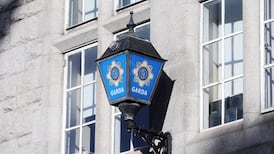AFGHANISTAN: Kabul is not yet ready to embrace the brave new world promised by Western donors, writes Paul Cullen.
Springtime in Kabul, and the snows are melting in this wrecked city set in a bowl of vast mountain peaks. Trees are budding, and a drought of years looks like coming to an end.
Yet, although Mother Nature has finally started to smile on Afghanistan's capital there are fewer signs that the country is ready to emerge from its long winter of war and economic hardship.
Over three months after the US and other Western states invaded Afghanistan and toppled its Taliban government, there is only limited evidence of regeneration and rebuilding in the city.
Kabul remains an edgy place, not yet ready to embrace the brave new world promised by Western donors and fearful of attacks from remnant Taliban elements. Order is maintained on the streets by men brandishing chains and steel rods, and the armed soldiers of the international forces are never far away.
Vast areas of the city are a picture of unremediated devastation, the result not of the US attacks but of earlier fighting during the civil war in the 1990s.
In fact, it is difficult to find evidence of the damage inflicted by the Americans, so precise was the work of the guided missiles released by their fighter pilots. Locals show you a bunkhouse where dozens of foreign al-Qaeda fighters were incinerated by a missile strike, while their Afghan neighbours across the yard survived untouched.
By one estimate, albeit unconfirmed, only 20 civilians died in the city as a result of the US air attacks.
Tentatively, people have started to return, buying plastic sheeting to cover the windows of their ruined houses and straw to mix with mud for the repair of adobe walls. Used shell casings have been converted into traffic bollards and a few of the 20 cinemas that once operated in Kabul have reopened to show Bollywood films from India.
Children fly kites, sing songs and whirl up and down in playground swings - all activities denied to them under the Taliban.
Almost two million children attended school for the first time on Saturday, most of them using textbooks developed in the US. Ironically, it wasn't so long ago that the American were spending millions of dollars on schoolbooks which promoted fundamentalism and violence among Afghan children.
But that was during the Cold War, when the Taliban's precursors were waging a guerrilla war against the occupying Soviet army. Over 20 years later, the Americans are having to learn how to "unreap" the whirlwind.
While the Americans pursue the war elsewhere in the country, the humanitarians are setting up their operations in the capital. With them comes the inevitable downside of Western wealth - fleets of four-wheel drive vehicles and constant traffic jams, rising living costs and a growing army of street children dependent on the handouts of the kharege-ha (foreigners).
One man tells me he used to pay $100 for six months' accommodation, but now it costs that sum each month.
The traffic is directed by elaborately decked out traffic police, but then you learn that they are unpaid, and are doing the job in the hope that the interim administration will reward them with a permanent post.
The black-turbaned Taliban may have gone, but religion still hangs heavy in the air. In recent days, Shia Muslims have observed their holy days with noisy, aggressive parades through the city. Flagellants beat themselves in view of their co-religionists to prove their devotion to Allah.
Women are still next to invisible, either behind the doors of their homes or behind the veil of the still ubiquitous burqa.
They're putting a fresh coat of paint on the modest residence designated for the exiled king Mohammad Zahir Shah, whose "will-he, won't-he return" act has gone on for months now.
Meanwhile, his mock Italianate royal palace stands wrecked and roofless on the outskirts of town, and is home to a band of children tending sheep and goats.









